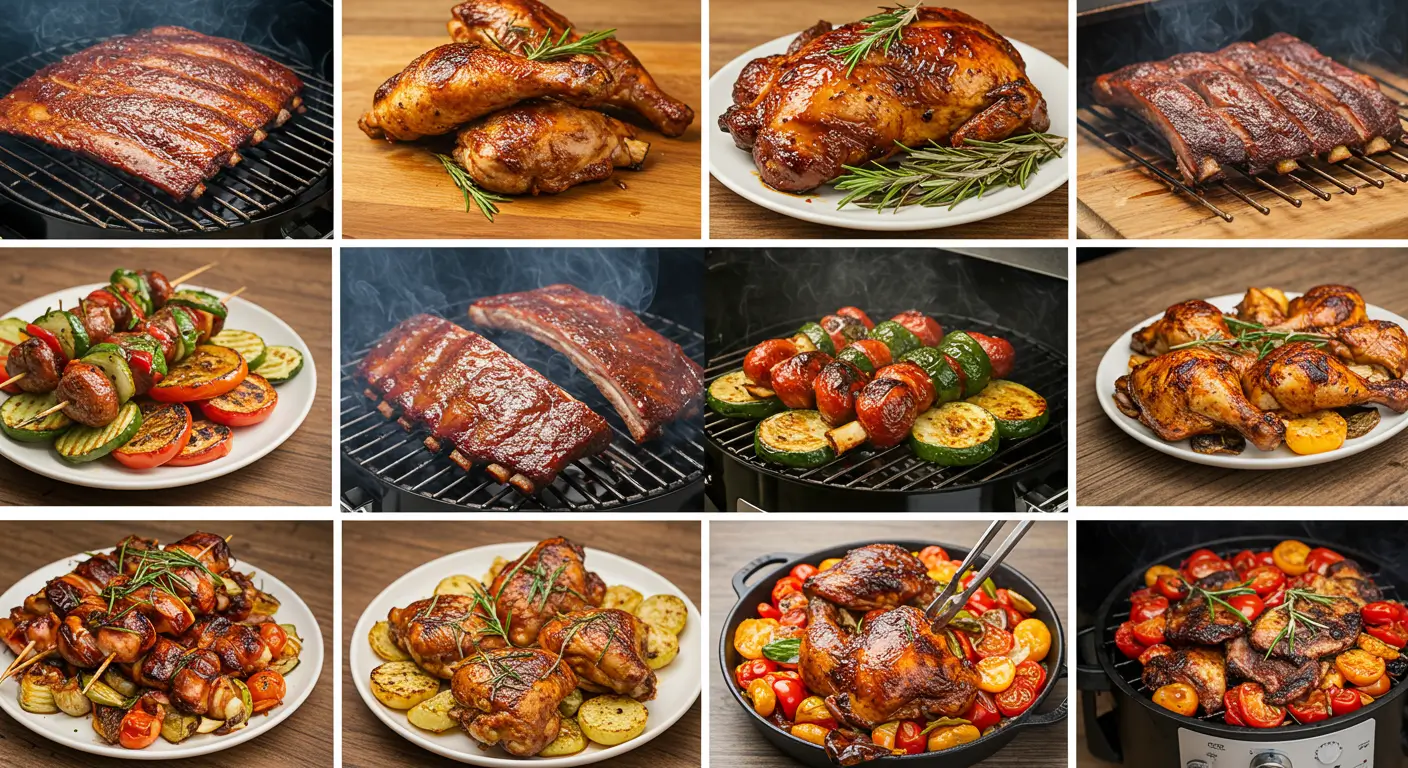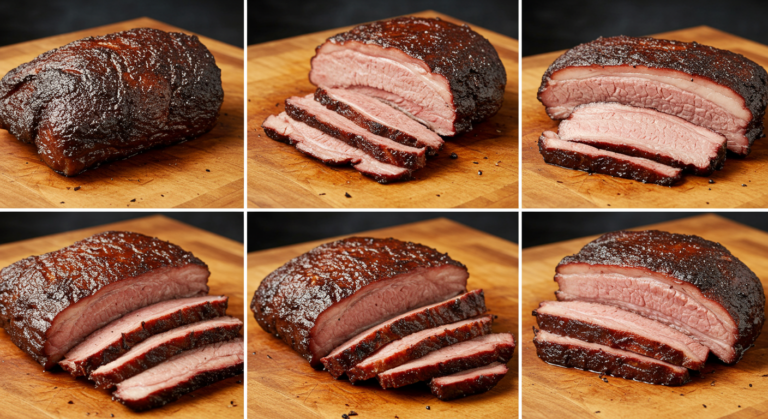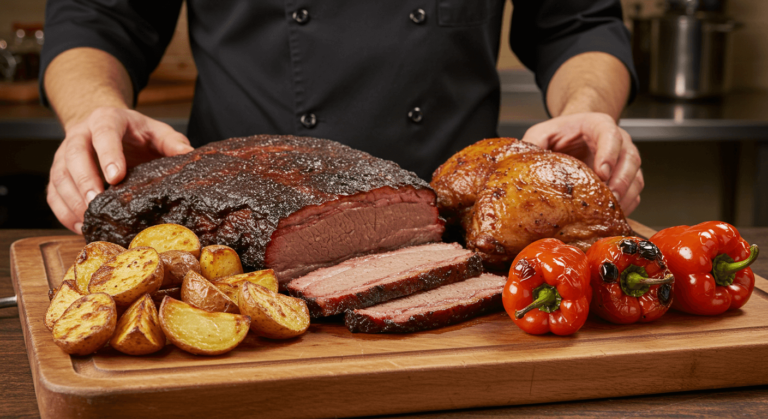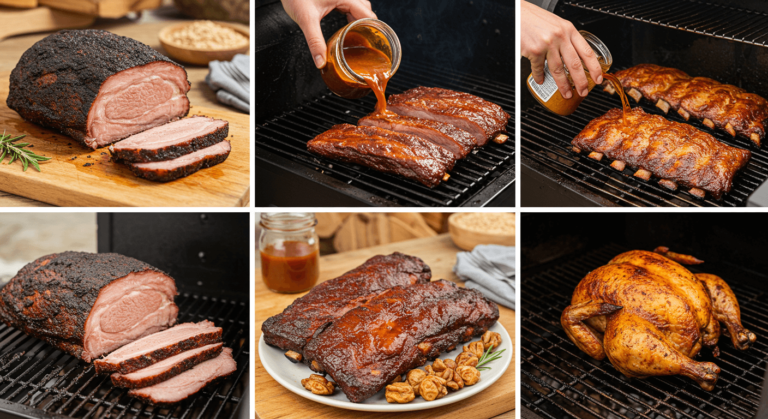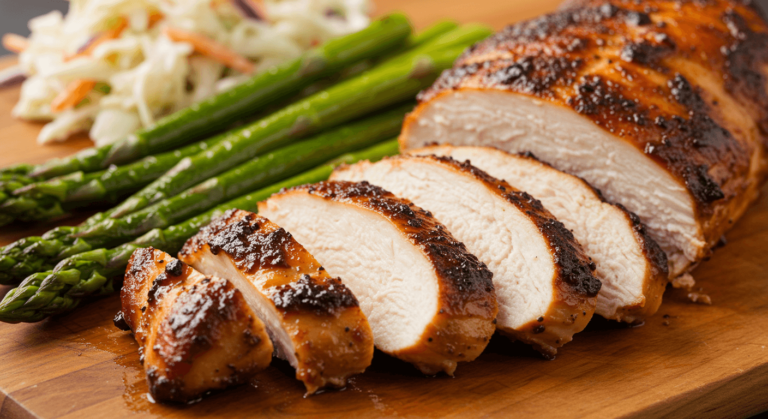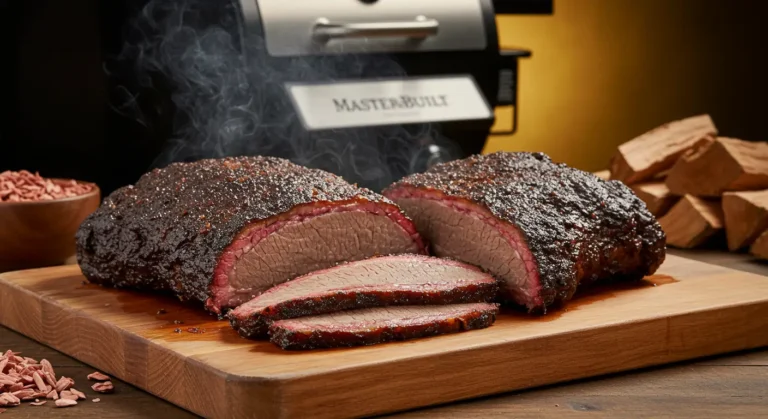How to Cook Perfect Ribs in an Electric Smoker recipes
There’s something almost magical about that first bite of perfectly smoked ribs – the way the meat pulls cleanly from the bone without falling off, that beautiful pink smoke ring, and the complex layering of flavors that simply can’t be replicated by any other cooking method. Whether you’re new to the world of electric smoking or looking to perfect your technique, this comprehensive guide will walk you through everything you need to know about creating mouthwatering ribs and other delicious foods in your electric smoker.
What Makes Electric Smokers Special for Cooking Ribs?
Electric smokers offer distinct advantages for home cooks looking to create restaurant-quality smoked meats. Unlike traditional offset smokers, electric models provide consistent temperature control with minimal monitoring, making them perfect for beginners and busy households alike. The Masterbuilt electric smoker, for example, has become a favorite among home smoking enthusiasts for its reliability and ease of use.
“The beauty of electric smokers is they democratize the art of smoking,” says award-winning pitmaster Jonathan Davis. “What once required years of practice to master can now be achieved consistently by anyone willing to learn the fundamentals.”
Let’s explore what makes electric smoker recipes so appealing and how you can achieve perfect results every time.
The Art and Science of Smoking Food
At its core, smoking is a beautiful marriage of science and culinary tradition. When you place meat in your electric smoker, several processes begin simultaneously:
- Protein Denaturation: Low, slow heat causes tough collagen in meat to break down into gelatin, creating that fall-off-the-bone tenderness.
- Smoke Particle Adhesion: Compounds in wood smoke adhere to the meat’s surface, forming the distinctive “bark” and smoke ring.
- Maillard Reaction: The interaction between amino acids and reducing sugars creates hundreds of new flavor compounds.
- Moisture Evaporation: Controlled dehydration concentrates flavors while maintaining juiciness.
Understanding these processes helps you make informed decisions about temperature selection, smoking duration, and wood choices.
How Different Woods Create Distinct Flavor Profiles
The type of wood you choose dramatically impacts the final flavor profile of your smoked foods:
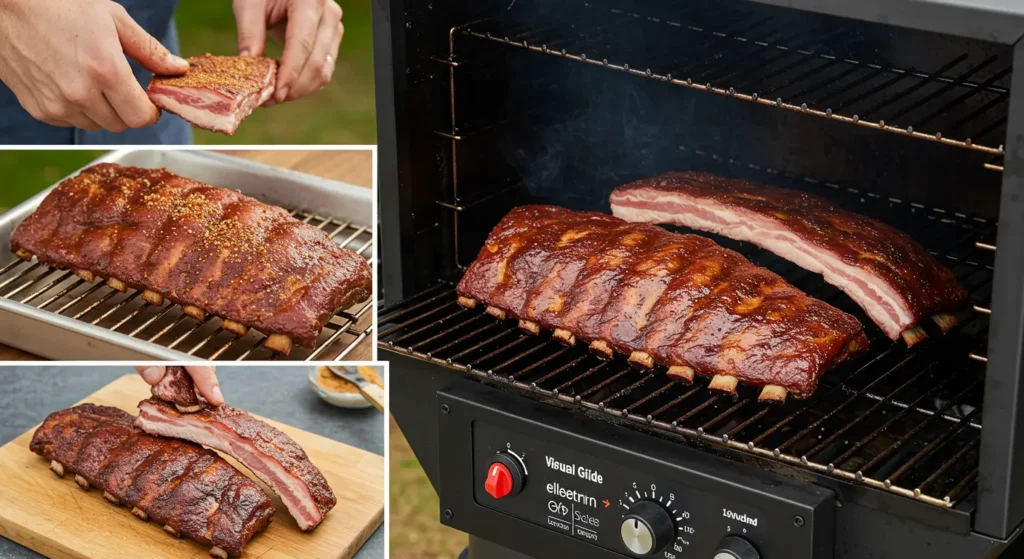
| Wood Type | Flavor Profile | Best Paired With |
|---|---|---|
| Hickory | Strong, bacon-like | Beef ribs, brisket |
| Apple | Mild, sweet, fruity | Poultry, fish |
| Mesquite | Intense, earthy | Beef, game meats |
| Cherry | Mild, sweet | Poultry, beef |
| Oak | Medium, versatile | Beef, lamb, game |
| Maple | Mild, subtly sweet | Poultry, vegetables |
| Pecan | Rich, nutty | Beef ribs, turkey |
Pro tip: New smokers often make the mistake of using too much wood. Remember, you’re looking for thin blue smoke – barely visible and aromatic – not thick white billows that can impart bitter flavors.
The Importance of Temperature Control
The magic of smoking happens between 225°F and 275°F – what pitmasters call “the sweet spot.” In this range:
- Collagen breaks down gradually
- Fat renders slowly
- Moisture is retained
- Smoke particles adhere effectively
Electric smokers excel at maintaining this range with minimal fluctuation, unlike traditional offset smokers that require constant attention.
Understanding and Managing “The Stall”
Every smoking enthusiast eventually encounters “the stall” – that frustrating period when your meat’s internal temperature plateaus, seemingly refusing to rise despite hours in the smoker.
This phenomenon occurs when evaporative cooling (moisture leaving the meat’s surface) temporarily counterbalances the heat being absorbed. For beef ribs and brisket, this typically happens around 150-170°F internal temperature.
To manage the stall when making an electric smoker brisket recipe:
- Be patient: Sometimes simply waiting it out is best
- The Texas Crutch: Wrapping in foil or butcher paper can help push through the stall
- Increase temperature slightly: A small 10-15°F bump can help overcome the plateau
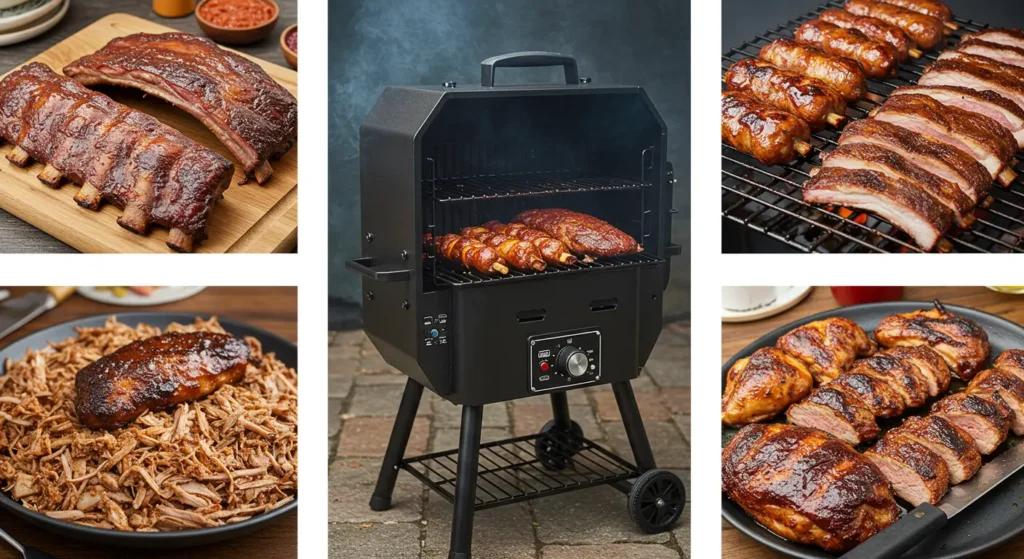
What Are the Best Meats for Your Electric Smoker?
While we’ll focus extensively on ribs in this guide, your electric smoker is versatile enough to handle virtually any protein beautifully.
Beef Options
Beef Ribs: Often called “dinosaur ribs” for their impressive size, beef ribs develop incredible flavor and tenderness in an electric smoker. Look for plate ribs (ribs 1-3) for the meatiest cut.
Brisket: The holy grail of smoking. Following a proper electric smoker brisket recipe transforms this tough cut into butter-soft meat with incredible bark. When shopping for brisket:
- Choose USDA Choice or Prime grade
- Look for good marbling throughout
- Aim for a thick, flat cut with consistent thickness
- 12-16 pounds works well for most home smokers
Chuck Roast: Often called “poor man’s brisket,” this cut is more forgiving for beginners while delivering similar flavor profiles.
Poultry Options
Whole Chicken: An excellent entry point for beginners, whole chickens smoke relatively quickly (3-4 hours) and are forgiving.
Turkey: Whether whole or just breasts, turkey takes on smoke beautifully and remains moist in the controlled environment of an electric smoker.
Game Birds: Quail, pheasant, and duck all develop remarkable flavor when smoked, though they require careful temperature monitoring to prevent drying.
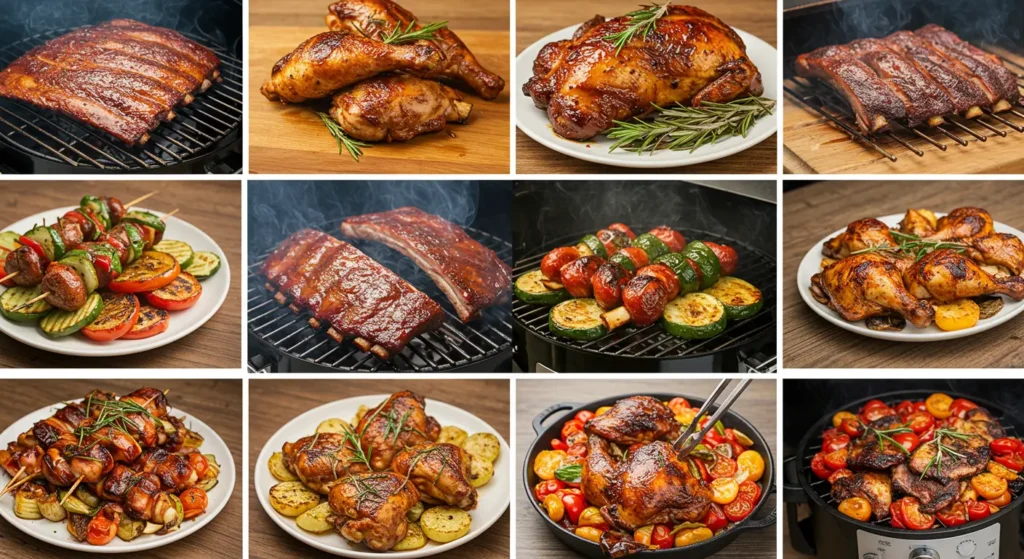
Seafood Options
Salmon: Cold or hot smoking salmon creates entirely different but equally delicious results.
Trout: Whole trout hot-smoked with apple wood creates a memorable meal with minimal effort.
Shellfish: From oysters to shrimp, the delicate sweetness of shellfish is enhanced by light smoking.
How to Cook Perfect Ribs in Your Electric Smoker
Now for the main event – creating mouthwatering ribs in your electric smoker.
Selecting Your Ribs
For beef ribs, you’ll typically choose between:
- Plate Short Ribs (NAMP 123): These are the massive, meaty “dinosaur ribs” you see in photos
- Chuck Short Ribs (NAMP 130): Smaller but still flavorful
- Back Ribs: Less meat but still delicious
Look for ribs with good marbling, as fat equals flavor and moisture. Avoid ribs with excessive surface fat that will need to be trimmed away.
Preparation Steps
- Trim: Remove the tough silverskin membrane from the bone side using a butter knife and paper towel for grip
- Season: Apply your rub generously on all sides (recipe below)
- Rest: Let the seasoned ribs sit at room temperature for 30-45 minutes to allow the rub to adhere
Basic Beef Rib Rub Recipe:
- 2 tablespoons kosher salt
- 2 tablespoons coarse black pepper
- 1 tablespoon garlic powder
- 1 tablespoon onion powder
- 1 teaspoon cayenne (optional for heat)
The Smoking Process
- Preheat your electric smoker to 250°F
- Add wood chips (hickory or oak works wonderfully with beef)
- Place ribs bone-side down on the middle rack
- Maintain temperature between 225-275°F throughout the cook
- Spritz occasionally with apple cider vinegar or beef broth (optional)
- Monitor internal temperature rather than relying solely on time
The Wrap Stage (Optional)
After 3-4 hours, when the bark has formed and the internal temperature reaches around 165°F, you may choose to wrap:
- Lay out double layers of heavy-duty aluminum foil or butcher paper
- Place ribs meat-side down
- Add a small amount of liquid (beef broth, apple juice, or even a splash of bourbon)
- Wrap tightly and return to the smoker
When Are They Done?
Beef ribs are done when:
- Internal temperature reaches 200-205°F
- A probe slides into the meat with almost no resistance
- The bones move freely when twisted gently
The Critical Rest Period
This step is non-negotiable! Allow your ribs to rest, wrapped and insulated in a cooler or warm oven for at least 30 minutes (up to 2 hours is fine). This allows juices to redistribute and the meat to relax.
Beyond Ribs: Vegetables and Seafood in Your Electric Smoker
Your electric smoker isn’t just for meat – it opens up a world of possibilities for other ingredients.
Vegetable Smoking Chart
| Vegetable | Prep Method | Temp | Time | Wood |
|---|---|---|---|---|
| Bell Peppers | Halved, seeded | 225°F | 1-1.5 hrs | Apple |
| Corn | Husked | 225°F | 1-1.5 hrs | Maple |
| Onions | Halved | 225°F | 1-2 hrs | Cherry |
| Tomatoes | Halved | 200°F | 1 hr | Hickory |
| Mushrooms | Whole | 225°F | 45-60 min | Oak |
Smoked vegetables develop a depth of flavor that’s impossible to achieve through other cooking methods.
Cold Smoking vs. Hot Smoking Seafood
Cold Smoking (under 85°F) is perfect for:
- Salmon for lox
- Trout
- Scallops
Hot Smoking (175-225°F) works beautifully for:
- Salmon fillets
- Whole trout
- Shrimp
- Oysters
For a simple but impressive hot-smoked salmon:
- Brine salmon fillets for 8-12 hours (1 cup salt, 1 cup brown sugar, 1 gallon water)
- Rinse thoroughly and pat dry
- Let develop a pellicle (tacky surface) by resting uncovered in refrigerator for 2-3 hours
- Smoke at 175°F with alder or apple wood until internal temperature reaches 145°F (about 2-3 hours)
Beginner Electric Smoker Recipes to Build Confidence
If you’re new to smoking, these proven recipes will help you develop skills while virtually guaranteeing success:
Smoked Beef Chuck Roast
This “poor man’s brisket” is more forgiving than its more famous counterpart:
- Season a 4-5 pound chuck roast with equal parts salt and pepper
- Smoke at 250°F until internal temperature reaches 165°F
- Wrap in butcher paper or foil with a splash of beef broth
- Continue smoking until internal temperature reaches 200-205°F
- Rest for at least 1 hour before pulling or slicing
“Chuck roast was my gateway to smoking larger cuts,” shares home smoking enthusiast Maria Sanchez. “It taught me patience and temperature control without the stress of potentially ruining an expensive brisket.”
Smoked Chicken Quarters
Ready in under 4 hours with incredible flavor:
- Brine quarters for 4 hours (1/4 cup salt, 1/4 cup sugar per quart of water)
- Pat dry and season with your favorite poultry rub
- Smoke at 275°F until internal temperature reaches 175°F in the thigh
- No need to wrap – the skin will still be enjoyable at this higher smoking temperature
Advanced Recipes for Special Occasions
Ready to impress at your next gathering? These showstoppers require more technique but deliver remarkable results:
Competition-Style Beef Brisket in Electric Smoker
This recipe for brisket in electric smoker follows competition techniques:
- Trim a 12-14 pound prime brisket, removing hard fat and creating aerodynamic edges
- Season with 50/50 salt and coarse pepper, plus 10% garlic powder
- Smoke at 250°F, maintaining a clean blue smoke
- When internal temperature reaches 165-170°F, wrap tightly in butcher paper
- Continue smoking until internal temperature reaches 203°F in the thickest part
- Rest in a cooler for 2-4 hours before slicing against the grain
Smoked Beef Cheeks
These underappreciated cuts transform into “meat butter” when smoked properly:
- Clean cheeks of silver skin and excessive fat
- Season with salt, pepper, and smoked paprika
- Smoke at 250°F for 3 hours
- Wrap with beef tallow or butter
- Continue smoking until internal temperature reaches 205°F (typically 2-3 more hours)
- Rest 1 hour before serving
Troubleshooting Your Electric Smoker Recipes
Even experienced smokers encounter challenges. Here’s how to address common issues:
Temperature Problems
- Smoker won’t reach temperature: Check for proper electrical connection; ensure door seals properly
- Temperature fluctuations: Verify ambient temperature isn’t extremely cold; check for consistent power supply
- Hot spots: Rotate meats halfway through cooking for even results
Smoke Quality Issues
- Bitter taste: You’re using too much wood or creating thick white smoke
- No smoke flavor: Ensure wood chips are properly placed; don’t soak chips for electric smokers
- Too much smoke flavor: Use less wood; switch to milder woods like apple or cherry
Meat-Specific Challenges
- Dry brisket: Likely overcooked or insufficient marbling in the meat
- Tough ribs: Need more time; remember “done” is about tenderness, not just temperature
- Rubbery skin on poultry: Finish in oven at high temperature or over direct heat on grill
The Smoke Ring Science
That beautiful pink ring beneath the surface of properly smoked meat isn’t just visually appealing – it’s evidence of complex chemical reactions. When nitrogen dioxide from wood smoke combines with myoglobin in meat, it creates this distinctive marker.
Interestingly, the smoke ring stops developing at around 140°F internal temperature. This means:
- Thinner cuts develop proportionally deeper rings
- The ring’s depth is not necessarily an indicator of smoke flavor
- Electric smokers can produce excellent smoke rings despite myths to the contrary
Creating Custom Rubs and Marinades
While countless commercial options exist, creating your own rubs and marinades allows you to customize flavors precisely to your preference:
masterbuilt electric smoker recipes
Basic Rub Formula
- 2 parts salt (flavor foundation)
- 2 parts pepper (complexity and visual appeal)
- 1 part sugar (caramelization, balances salt)
- 1 part spices (paprika, garlic powder, etc.)
Adjust ratios based on personal preference and the specific meat you’re smoking.
Simple Beef Marinade
- 1 cup beef broth
- 2 tablespoons Worcestershire sauce
- 2 tablespoons soy sauce
- 2 cloves minced garlic
- 1 tablespoon coarse black pepper
Marinate thinner cuts for 4-8 hours before smoking for enhanced flavor penetration.
FAQs About Electric Smoker Recipes
How to Smoke Pulled Pork in an Electric Smoker
Final Thoughts on Mastering Your Electric Smoker
Smoking meat is a journey, not a destination. Each cook teaches you something new about your equipment, techniques, and flavor preferences. The beauty of modern electric smokers lies in their consistency – they provide a stable platform for you to experiment and develop your personal smoking style.
Remember that perfect results come from understanding the fundamentals, being patient, and paying attention to details. Temperature management, quality ingredients, and proper resting are non-negotiable elements of great barbecue.
Most importantly, don’t be afraid to experiment. Some of the most memorable meals come from creative risk-taking and learning from occasional failures. Document your cooks, note what works, and build your own repertoire of foolproof recipes.
What smoking adventure will you embark on next? Whether it’s mastering that perfect electric smoker brisket recipe or exploring the world of smoked seafood, your electric smoker is the reliable partner that will help you create memorable meals for years to come.
Have questions about specific electric smoker recipes? Share your experiences or challenges in the comments below. Our community of smoking enthusiasts is always eager to help fellow smokers perfect their craft!
Have You Tried This Recipes!
Amazing Electric Smoker Recipes for Perfect BBQ!
“I’ve tried several electric smoker recipes, and they truly elevate backyard BBQs! From tender smoked ribs to juicy brisket, these recipes are easy to follow and packed with flavor. The step-by-step instructions make smoking effortless, even for beginners. Highly recommend for anyone looking to master the art of smoked cooking!”

